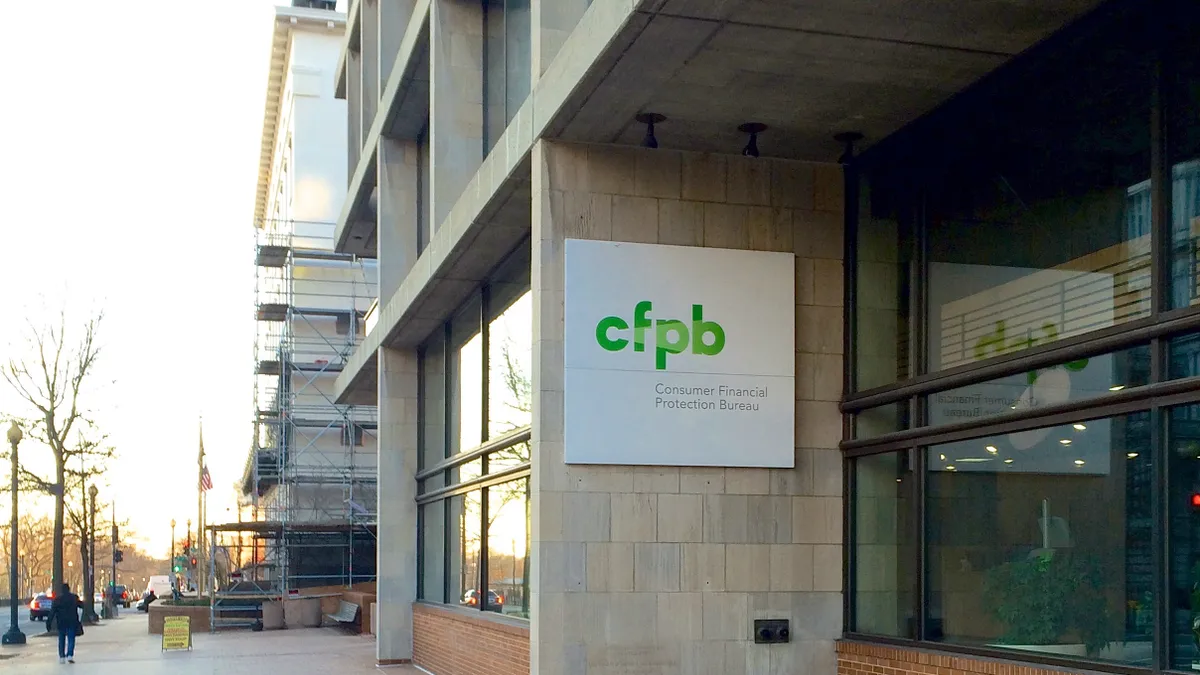Dive Brief:
- The U.S. Court of Appeals for the Second Circuit on Thursday ruled the Consumer Financial Protection Bureau’s funding structure is constitutional.
- In a decision that upholds a lower court's 2020 ruling in favor of the consumer watchdog, the three-judge panel also rejected a ruling made by the Fifth Circuit Court of Appeals last year.
- The decision comes as the Supreme Court in February agreed to hear the Fifth Circuit’s case challenging the CFPB’s funding apparatus.
Dive Insight:
The Second Circuit’s decision creates a clear conflict between the Second and Fifth Circuits regarding the constitutionality of the CFPB, providing the Supreme Court with further incentive to directly resolve the issue, said Joe Lynyak, a partner at the international law firm Dorsey & Whitney and an expert on financial regulatory reform.
In the Fifth Circuit’s October ruling, the New Orleans-based court ruled the CFPB’s funding apparatus violates the separation-of-powers principles in the U.S. Constitution, because it receives funds from the Federal Reserve and not Congress.
The Second Circuit case was brought by a New York-based debt collection law firm, which argued it should not have to comply with a CFPB civil subpoena due to the unconstitutional nature of the agency’s funding structure.
The Second Circuit’s opinion, however, rejects that argument and adopts a “practical, real-world view” of the limitation of the appropriations clause — namely, that the payment of an appropriation must be authorized by a statute, Lynyak said.
“According to the court, that clearly occurred as part of the adoption of the Dodd-Frank Act,” he said.
The CFPB was created in the wake of the 2007-08 financial crisis, as part of the Dodd-Frank Act.
In its ruling last year, the Fifth Circuit, which covers Texas, Louisiana and Mississippi, called the CFPB’s funding structure an “unprecedented arrangement” that crosses the line between a constitutionally and unconstitutionally funded agency.
The Second Circuit, however, rejected the Fifth Circuit’s decision, arguing that “because the CFPB’s funding structure was authorized by Congress and bound by specific statutory provisions … the CFPB’s funding structure does not offend the Appropriations Clause.”
“[The court] indicated that one branch of the federal government can reasonably utilize another branch to implement a legitimate legislative purpose — the use of funds from the Federal Reserve to operate the CFPB is such an example and clearly permissible,” Lynyak said.
Meanwhile, the Supreme Court will hear arguments in the Fifth Circuit case in October, the start of its next term, meaning a final decision is unlikely until 2024.
The CFPB has faced a constitutional challenge to its structure before. In 2020, the Supreme Court ruled 5-4 that the agency’s leadership structure was unconstitutional.
That case was brought by a California debt collection law firm, which argued it should not have to comply with a CFPB civil investigative demand because the bureau’s leadership, which could only be removed “for cause,” violated the Constitution’s separation-of-powers rule.













